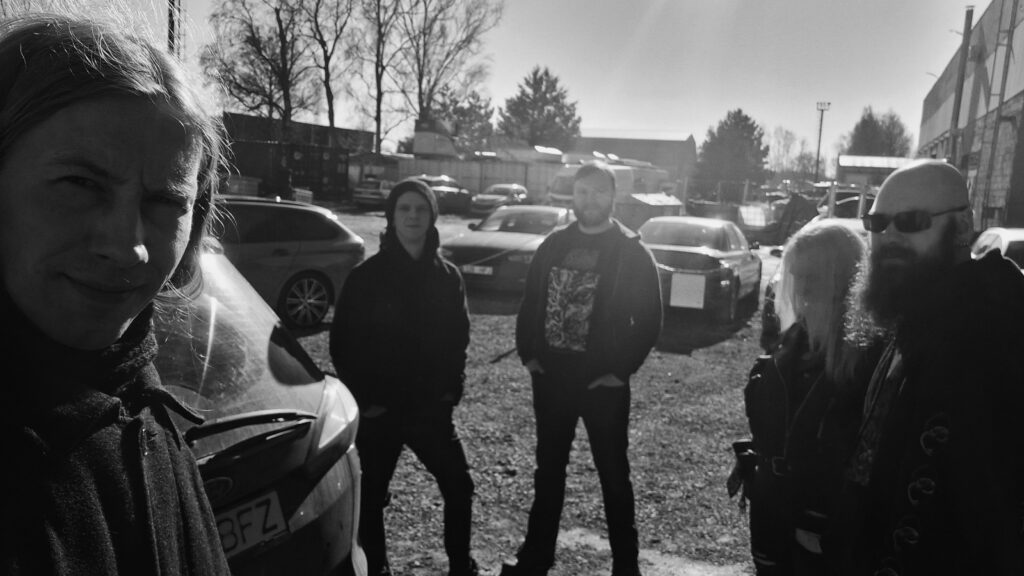Metal Made Tarbatu
Anyone who has been following the activities of the Tartu metal scene has probably noticed the pride we feel for our hometown and its people. As a long-time resident of Tartu, and having spent more than a quarter of a century immersed in heavy music, I can confirm that the metal scene here, albeit with its rhythmic highs and lows, is an interesting phenomenon and certainly worth exploring. Over the years, a distinctive cultural layer of metal has grown into the town’s tissues, which I would like to introduce you to with the help of some local landmarks.
Tartu is not only the second largest town in Estonia, but also a place with a long history, which in some ways reflects the dynamics of the local metal scene – although of course on a much larger scale. The settlement developed on the slightly higher bank of the Emajõgi River some 1500 years ago, and in the 13th century the German crusader chronicler Henric recorded its name as Tarbata or Tharbete. Over the centuries, the town has seen all sorts of rulers and some pretty bad days, but the university, founded under Swedish rule in 1632, seems to have brought a spirituality to the town without which we would all have probably sunk into total provincial slumber. I would even go so far as to say that Tartu’s fragile but varied cultural life, including its extreme musical spectrum, owes a great deal to the free spirit and its colourful torchbearers emanating from the university.
When thinking about which places in the formation and development of the Tarbatu (here and hereafter we will stick to this name version) metal and especially the Pergerus group have been more significant or worthy of attention for other reasons, I filtered out eleven places. The list is strictly personal and, of course, debatable. I’m sure that anyone who has had any contact with the subject (myself included) can name a whole series of other venues, rehearsal rooms or legendary drinking hubs that have played a huge role in this long-haired noise world. You are welcome to let us know which places we should definitely add to our cultural memory!
But first, allow me to introduce my carefully selected list.
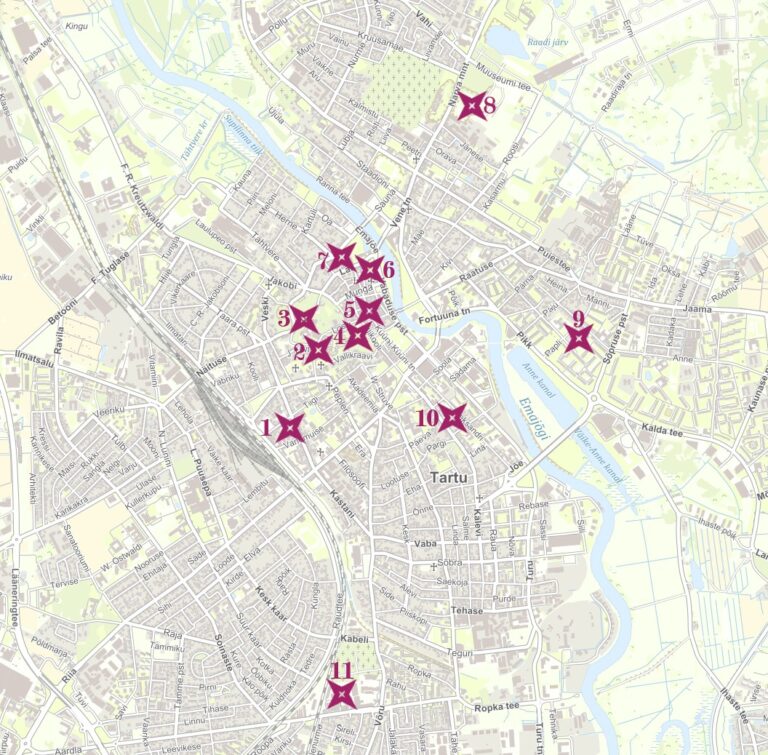
Clubs Rock & Roll Heaven and Hell
Let’s start our imaginative tour on the streets and backstreets of Tarbatu with probably the longest-running concert place, without which it’s extremely difficult to imagine a wireless music scene here. The total number of performers who have appeared here over the years reaches probably four digits. The seemingly completely arbitrary grey building at Tiigi 76a, near the railway station, is acutally a home to two clubs. On entering, you have to make a choice – upstairs on the second floor is Rock & Roll Heaven, and downstairs lies Hell. Originally, Rock & Roll only operated on the basement floor, but at some point the spacious Heaven on the upper floor was included, and the underground section was renamed Rock & Roll Hell. When Rock & Roll decided to concentrate solely on Heaven (where they have remained to this day), the basement rooms passed into the hands of another enthusiastic bunch who have kept the vitality of Tarbatu’s aggressive music while keeping the name Hell.
It would be impossible to recount all the spirited performances and concerts on the sweat-soaked stages of Hell and Heaven. I myself started making noise there 20 years ago with the doom band Aldevia. Among the big things we’ve been doing lately, I’d just mention the autumn metal festival Tarbariitus, which has successfully combined the possibilities of Heaven and Hell. Mark the dates of the festival in your calendar and see for yourself already this October!


Devil’s Bridge
From concerts on Tiigi Street, late-night revelers have more than once made their way downtown to the throbbing heartlands of Tarbatu. Often the route goes over Toomemägi, a site of immense importance to the development of the town. It was once the site of a fortress overlooking the riverbanks, and in the 19th century an English-style park was laid out on the hill to invigorate the mental health of the university folk. One of the park’s features is the dark Gothic scented Devil’s Bridge. The origin of the name of this concrete construction is uncertain, but it may have been named that way to stress the contrast with the light-coloured Angel’s Bridge. However, the architectural feat dedicated to the Romanovs, the Russian rulers, did not bring them much luck. Devil’s Bridge has been more useful as a source of inspiration for experimental black metal collective Form in the creation of a short electronic piece – see it here.
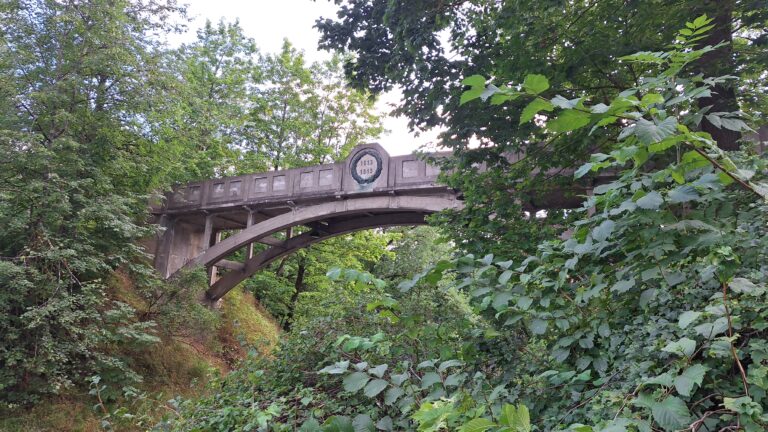
Cathedral
The glory and splendour of Toomemägi ever since the 13th century has been the cathedral. Even after falling in ruins in the 16th century, its red-brick walls and pointed arches tower mightily among the park trees as a testimony to the unknown times of old. For the local metal life, the cathedral is an essential anchor point – it’s where young darkhearts occasionally gathered under the autumnal night clouds shrouding the moon, while in daylight the cathedral has played host to the photo sessions of wedding couples, singing groups, and extreme metal bands. Among the latter, for example, Ziegenhorn comes to my mind.
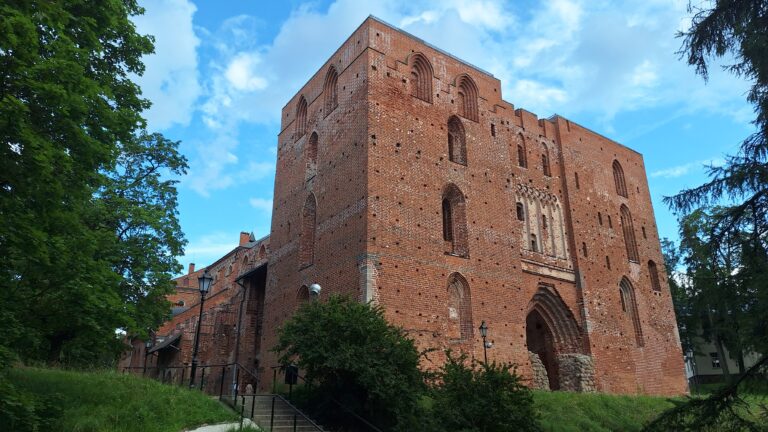
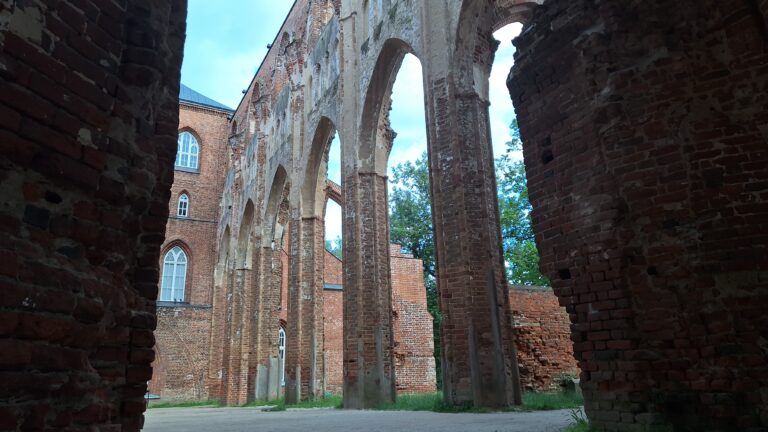
Pirogov Park
Descending downtown from Toomemägi along Lossi Street, Pirogov Park is probably the most famous green area in Tarbatu. The rulers of the town realised long ago that making certain concessions to students and other merry vagrants would actually make life easier for everyone, and allowed Pirogov Park to be used for consuming light alcoholic beverages during the warmer months. This piece of legislation draws together the most diverse range of human types that exist on earth. In the middle of the Pirogov greenery, bands have formed, fights have broken out, and scores have been settled. As far as I’ve heard, the lion’s share of the merch deals in the Tarbathian speed metal scene take place in Pirogov.
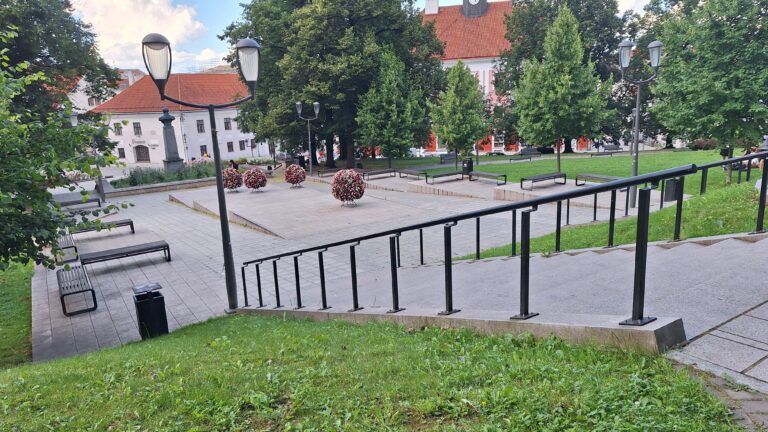
Former location of the Bar Underground
Rüütli Street is a definite nightlife hotspot with its numerous bars, cafes and other hangouts, but for those who prefer their music a little bit edgier, rock bar Underground was one of the most legendary catacombs off the main street. As a counterpart to the club Rock & Roll in the town centre, the Underground’s stone grottos were often the perfect after-party for rock club gigs. At one point, a downtown real estate development closed a direct route to the bar, and possibly as a result, its economic viability was challenged – indeed, to get to the Underground, you had to know a special secret route dedicated to the insiders (which is, of course, essentially very underground). Perhaps that’s partly why the Underground underwent major plastic surgery a few years ago. References to rougher music were removed and the new name Lege was given to the place. It is still operatingtoday, but unfortunately I can now only recommend it as a historical site.
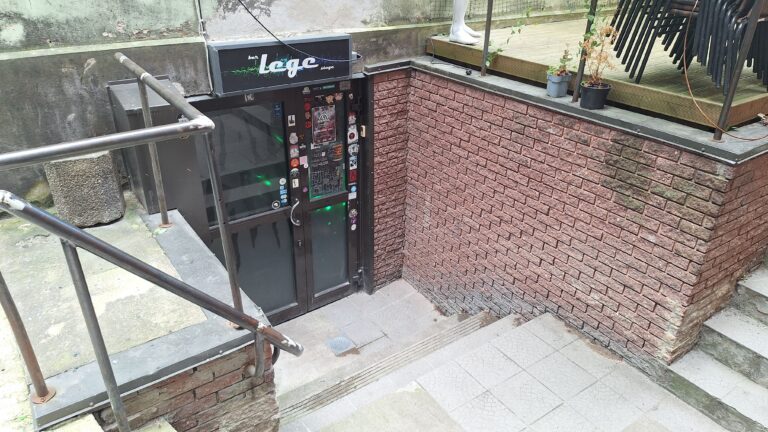
Genialistide Club
While the clubs Rock & Roll and Hell are somewhat away from the hustle and bustle of the town centre (although people from the actual big cities would probably laugh mercilessly at those who complain about the distance), there is another important concert venue in the heart of Tarbatu – the Genialistide Club. Named after the once-popular rock band Genialistid, its stylistic reach knows no bounds. Admittedly, for a long time it tended to stay on the sidelines for the heavier end of the musical spectrum, although occasionally some metal concerts did take place there. Of the Pergerus bands, Form was the first to break into the gates of the Gen club, presenting their debut album ‘Aerosols and Dust Particles’ here in early 2021 with an interactive art exhibition instead of a regular concert (corona restrictions played their part in the unorthodox choice). In the autumn of 2023, Warhorn Records’ frontman Kruxator organised the concerts “Archaic Tarbatu” and “Sõge Tartu” at the Genialistide Club, featuring Kaev, Ziegenhorn and Valendik from Tarbatu, Thou Shell Of Death and Lein from Tallinn, and Tenebrae Aeternum from Finland.

Tuum bar
After the dismal demise of the Underground bar, there was a lull in pure metal bars in Tarbatu for a while. However, some from the Underground team didn’t let things go and opened a new inn dedicated to heavy music, Tuum, this year. The bar’s location in a narrow side street off Lai Street is no stranger to the vagabonds of the town, however – Zavood, one of Tarbatu’s best-known alternative bars, long operated in the same place, appreciated by characters from very different backgrounds and preferences. Both Zavood and now Tuuma occasionally host live music. For example, I once played here with Ulguränd, and even though at first glance the room seemed small, we could fit in with all our gear.

The former location of the Khattra club ("Gravel Pit")
Next, we make a detour to the opposite bank of the Emajõgi River and head north along Narva Road to the Raadi-Kruusamäe district to find the most famous Tarbatu metal cave of its time – or rather what’s left of it. Built in the Soviet era at the bottom of an old gravel quarry, a modest building was adapted in the late 1990s and early 2000s to house the activities of the local metal community. The place was more formally known as the Khattra club, but commonly it was simply called Kruusaauk, the Gravel Pit. I even attended parties there a few times in the early days of my metal career, around 2002–2003. In one side of the house there was a small hall with a low stage and bizarre Giger-style murals, in the middle there was a huge metal stove to give warmth, and at the other end, which I never got to, was a small studio where several of the bands that shaped South-Estonian metal at the time (Ecthalion, Surrogoat, Realm Of Carnivora, etc.) recorded. All in all, a very cosy place, but its connection with the rest of the world may have been limited during the winter frosts – the narrow path leading down to the gravel pit was then covered with treacherous ice, and woe to anyone with a buzzed head who tried to get out of the crater after a hot concert.
Today, the landscape of the gravel pit has changed a lot. Instead of a steep mountain track, there’s a comfy staircase leading down to the quarry, but the building that used to be home to the club has been razed to the ground, so that only the outline of its foundations can be glimpsed in the hay. The club Khattra is gone, all that remains are memories and a few audio and video recordings. If you’re interested, check out the documentary “Tartu Under The Horns“, made in Germany two years ago, in which one of the masterminds behind Ecthalion and the Khattra club, Andres Valk aka Elf, talks about the activities in and around the club at the time.
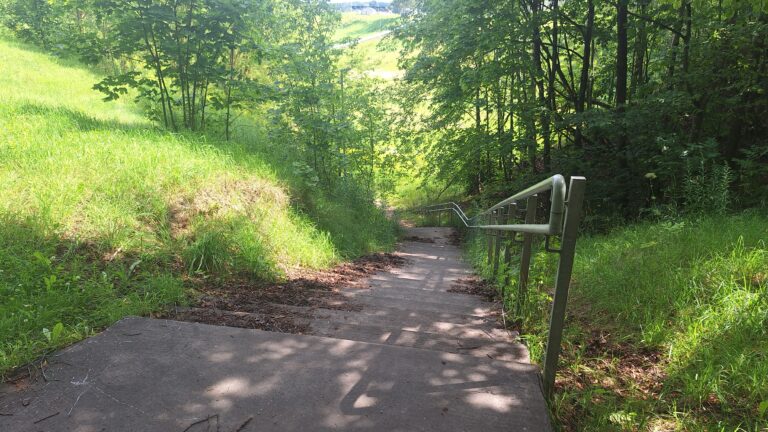
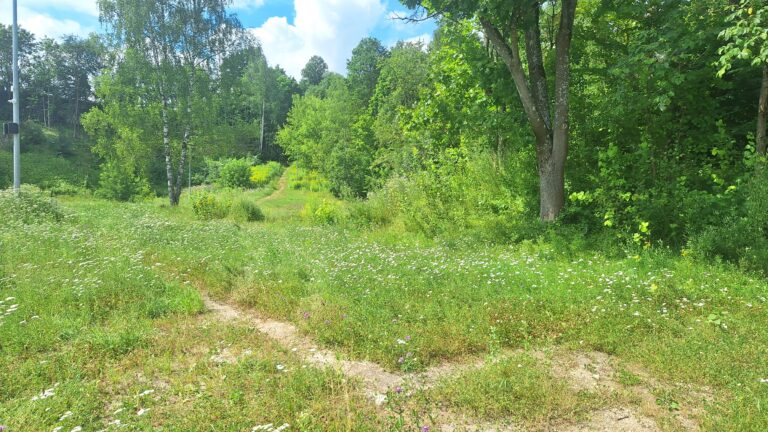
Anne Youth Centre – the first headquarters of the Pergerus group
Anne Youth Centre at the beginning of Annelinn district is yet another important landmark on the north bank of the Emajõgi with a very personal purposes. In its basement was a rehearsal room that probably most of the collectives of the late first decade of the 2000s used at some time. Langenu, which visited the room quite regularly, also evolved into a serious collective there. We were not the only ones. Among the others, Anne rehearsal room was avidly used by the band Tapper, with whom we soon became good friends. It was there, in 2012, that we formed a black metal alliance of five bands (Langenu, Tapper, Form, Ulguränd, Mortferus), to which the ever articulate bassist Maddy gave the name Pergerus, putting together fragments of several band names. For the next couple of years we considered Anne rehearsal room our spiritual centre and fortress, before we moved to our current citadel.
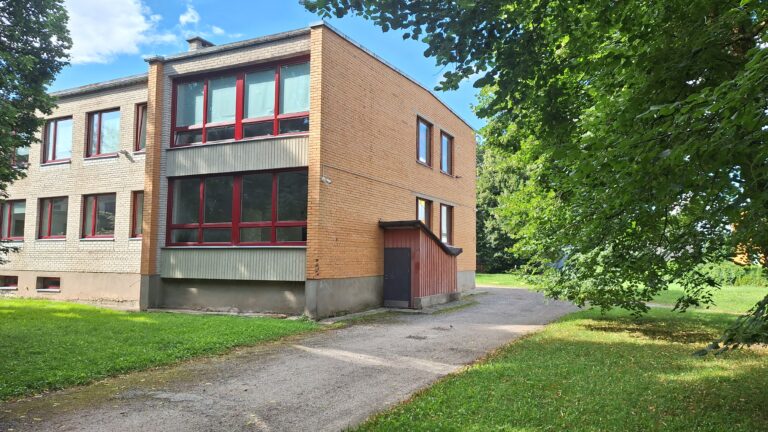
Tartu Student House ("Sõbra Maja, Friend’s House")
Located in Kalevi Street, very close to the town centre, the Tartu Student House or Sõbra Maja was built at the end of the 19th century, but it made a name in the metal field thanks to the “Pagan Night” series of concerts in the early 2000s. These brought a whole host of bands to Tarbatu – Metsatöll, Loits, Tharaphita, Manatark, Bestia, and the Latvian Skyforger, to name but a few of the still very well-known names. The first Pagan Night in the autumn of 2001 was also the first real metal show to attend for 1695, who was just starting to grow his fair hair, and has of course guided my musical tastes to this day. A decade later, the Hard Rock Club, which mainly operated in Tallinn, brought here some world-famous bands such as Vader, Exodus, Hypocrisy, and Keep Of Kalessin. I don’t know whether it was the moody echo of the big hall that the soundmen always had to fight with, or something else, but at some point the use of Sõbra Maja for the benefit of heavy music died down. Nowadays the Tartu Student Theatre mainly uses its rooms.
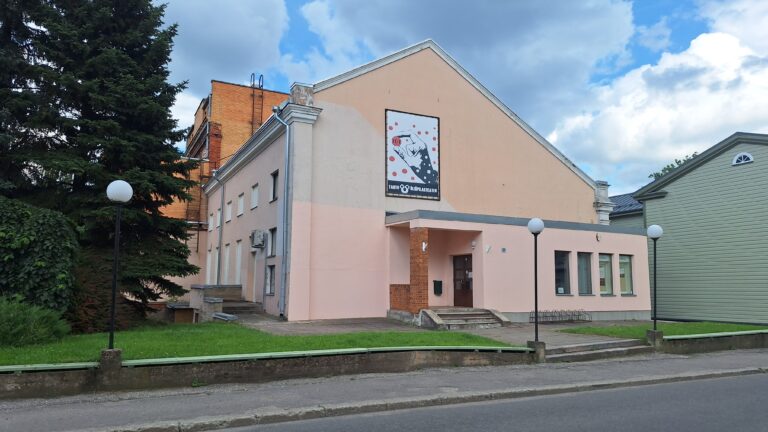
Pergerus Studio
At the very end of the tour, I left the industrial outskirts of Tarbatu, where a plethora of musicians with different musical orientations are at work at any given moment in the embrace of concrete and silicate. It’s always easier to make noise in sparsely populated areas than elsewhere. For more than a decade, Pergerus’ creative group has had its centre of gravity in such an environment, and it’s possible that this is echoing in the sound of some black and death metal bands of Tarbatu.
I must admit that there are two physical sites of Pergerus in the town. One is the rehearsal space for the alliance, founded in 2012, and the bands that have joined it later, and which has also served as a storeroom, home studio, conspiracy apartment, secret meeting room, and just plain hideout. But alongside it, there is another Pergerus that is much easier to find, and is intended for a wider audience. This is the Pergerus Studio, created by Anto Raig, where anyone can come by appointment to record their own music or other sonic nonsense. As Anto himself has, among other projects, played in black metal bands Form and Ulguränd, he has also recorded their songs in his studio – just listen to the split album “Tarbathian Fortress” (Warhorn Records, 2020). At the same time, his amplitude covers a wide range of styles, so unlike Pergerus, a group quite specifically focused on extreme music, Pergerus the studio is open to different offers.
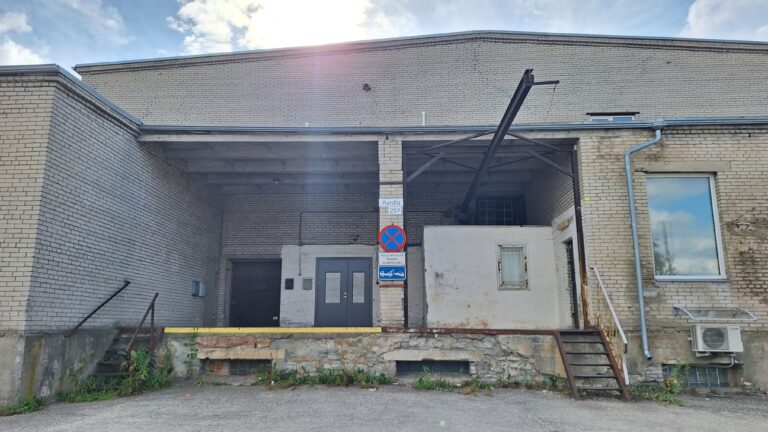
What does your metal Tarbatu look like?


